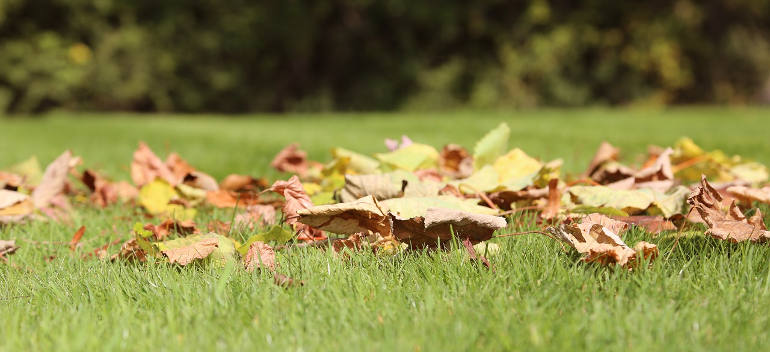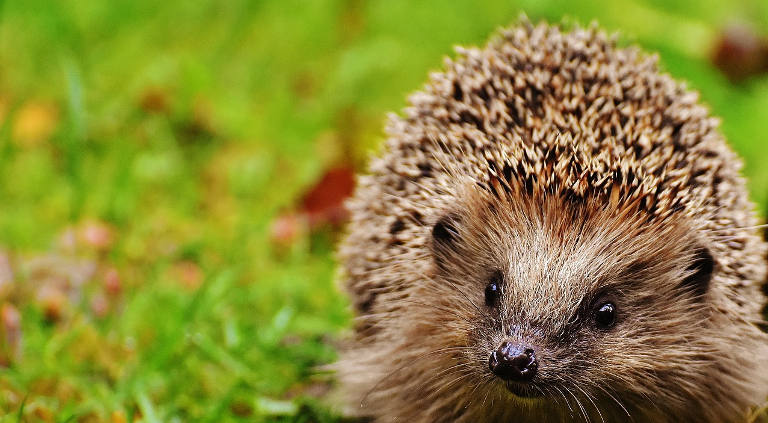
As summer slowly withdraws and the autumn chill takes over, the garden in September becomes crucial. Days grow shorter and nights become cooler. And as trees shed leaf after leaf – little harbingers of the colder months to come, you can get your mind off how yet another summer has passed and how fleeting time, in general, is by doing some practical tasks around your garden this September.
Enough things need to be done to prepare your gardens for the upcoming season and prevent any unwanted casualties of the cold weather. Here’s a handy list of essential gardening jobs for September that will keep you occupied for a good part of the month. Please don’t feel overwhelmed by how long it may seem, as most of the gardening tasks can be done by Fantastic Gardeners and spare you the hard work.
Table of Contents
Autumn garden clearance
- Clear out summer bedding plants: As flowers fade, remove summer bedding plants from beds, borders, and containers in your flower garden to make space for new seasonal plantings.
- Leaf and debris cleanup: Regularly clear fallen leaves and plant debris to prevent pests and diseases. A tidy garden also enhances its aesthetic appeal.
- Deadhead flowering plants: Remove spent blooms to encourage prolonged flowering and a cleaner appearance.
- Gutter cleaning and repair: Check your gutters for fallen leaves and blockages. This prevents overflow and water damage as autumn rains increase.
Prepare the soil and plant Spring flowering bulbs
- Soil enrichment: After summer’s intense growth, the soil often becomes depleted. Gardening in September involves enriching your garden soil by mixing it with compost and organic manure to replenish nutrients.
- Plant spring bulbs: Gardening in September is the perfect time to plant spring-flowering bulbs like daffodils, tulips, and crocuses. The warm soil combined with autumn rains encourages strong root growth, ensuring vibrant blooms come springtime.
Cut and divide perennials

- Prepare cuttings: Take semi-hard and hardwood cuttings from plants like lavender, camellias, and weigela to propagate new plants. This is a cost-effective way to expand your garden.
- Extend bloom time: Deadhead late-flowering perennials, such as dahlias, to encourage more blooms before frost sets in.
- Divide perennials: For herbaceous perennial plants like hostas and daylilies, divide the plants once they’ve finished flowering. This encourages healthy growth and prevents overcrowding.
Prune and trim
- Prune hedges and shrubs: Shaping evergreen shrubs and pruning your hedges will keep them healthy and looking neat throughout the winter. Be mindful of pruning certain shrubs that may not recover well in the cold.
- Plant hardy annuals: This is the time to plant hardy annuals like pansies or calendulas to add pops of colour in the cooler months.
Need a hand with the hedge pruning? Avoid over-pruning or damaging your plants by leaving this task to a specialist.
Enter your postcode to view our rates and availability in your area.
For questions about the services we offer visit our main site
Autumn lawn care
At the end of summer lawns don’t look as thick and lush as they did back in spring. There are probably “bald” spots here and there and the overall look isn’t pleasing to the eye. This can be fixed with a few autumn lawn care tips.
- Aerate the lawn: Use a garden fork to create small holes in your lawn, allowing air, water, and nutrients to reach the roots. This reduces soil compaction from summer activities.
- Weed and moss removal: Remove any weeds and moss that have built up during the summer. A weed-free lawn is easier to maintain and healthier overall.
- Water deeply: Give your lawn a deep soak to rejuvenate it after the hot summer months. This also prepares it for the colder, wetter weather ahead.
- Fertilise the lawn: Apply an autumn lawn feed to promote root strength over the winter, giving your grass a head start for next spring.
Check and repair
- Fences and greenhouses: Inspect your garden fences, sheds, and greenhouse structures for any damage. Make repairs now before winter weather makes them worse.
- Greenhouse care: Clean the inside and outside of your greenhouse, repairing any broken windows or seals to prevent heat loss and draughts, ensuring optimal conditions for your greenhouse plants.
Take care of garden ponds
- Drain non-fish ponds: If you have a pond without fish, consider draining it to prevent ice damage over the winter. Place a ball or polystyrene float in the pond to keep drainage holes clear if freezing occurs.
- Cover with netting: Keep falling leaves out of the pond by covering it with netting, reducing maintenance during the colder months.
- Trim aquatic plants: Cut back overgrown aquatic plants to prevent them from rotting in the water, which can raise nitrogen levels and harm aquatic life.
Protect tender plants
- Bring pots indoors: Move tender potted plants into a greenhouse, conservatory, or a sunny room indoors to protect them from frost.
- Mulching: Apply a thick layer of organic mulch around sensitive plants to insulate their roots from frost and help retain moisture.
- Use fleece or bubble wrap: Wrap tender plants in horticultural fleece or bubble wrap if you can’t move them indoors. This helps protect them from harsh weather.
- Choose a location with good air circulation: This helps prevent the buildup of moisture and reduces the risk of disease.
- Use a frost cloth or a cold frame: Cover your plants with these materials, making sure to secure them tightly to prevent wind damage.
- Bring plants under cover at night: Remove the cover during the day to allow for sunlight and air circulation.
- Consider using a greenhouse or a sunroom: These provide additional protection for tender plants, ensuring they stay warm and safe.
Pest and disease control

- Slug and snail prevention: Slugs and snails become more active in the cooler, wetter months. Use copper tape, crushed eggshells, or natural deterrents to keep them at bay.
- Aphid control: Regularly inspect your plants for aphids, which can spread diseases. Neem oil or insecticidal soap can help manage infestations.
- Fungal diseases: Watch for powdery mildew or leaf spots on plants, and use organic fungicides to treat affected areas.
Harvesting and storing
- Harvest fruits and vegetables: September is a great time to harvest fruits and vegetables from your vegetable garden, including apples, pears, plums, grapes, and root vegetables like carrots and beets. Gather your produce at peak ripeness for the best flavour.
- Proper storage: Store apples, pears, and grapes in a cool, dry place away from direct sunlight. Root vegetables like carrots and beets should be stored in a cool, dark environment, while leafy vegetables should be refrigerated.
Deadheading and seed collection
Deadheading and seed collection are essential tasks in September to promote healthy plant growth and encourage new blooms. Here are some tips:
- Deadhead late-flowering perennials: Remove spent blooms from plants like dahlias and cosmos to encourage new blooms and prevent seed production.
- Collect seeds from annuals and perennials: Gather seeds from plants such as marigolds and zinnias to sow next year.
- Use a garden fork: Gently loosen the soil around plants to make it easier to collect seeds.
- Store seeds properly: Keep seeds in a cool, dry place to preserve their viability for the next season.
By following these tips and incorporating these tasks into your September gardening routine, you’ll ensure your garden remains healthy and vibrant, ready to face the winter months ahead.
General maintenance
September is a great time to perform general maintenance tasks in the garden to prepare for the upcoming winter months. Here are some tasks to consider:
- Clean and store gardening tools: Prevent rust and damage by cleaning and storing your tools properly.
- Inspect garden structures: Check fences, trellises, and other structures for any damage and make necessary repairs.
- Check for signs of pests and diseases: Take action to prevent their spread and protect your plants.
- Maintain your irrigation system: Consider hiring a professional to inspect and maintain your garden’s irrigation system to ensure it’s in good working order.
In conclusion
September gardening may seem like a lot of work, but knowing what to do in the garden in September can make it easier. Here’s what to do in the garden in September to prepare for the upcoming winter months. You don’t have to tackle all of the tasks at once. Take your time and do them on the weekends. This way you will stay busy and keep your garden in top shape.
Of course, if you have more important things to do, you can always get in touch and let us do the autumn garden preparation for you.
Need a professional gardener?
Enter your postcode to view our rates and availability in your area.
For questions about the services we offer visit our main site



